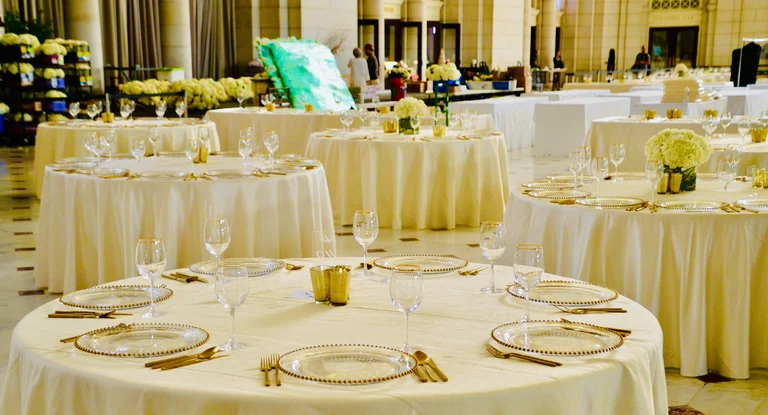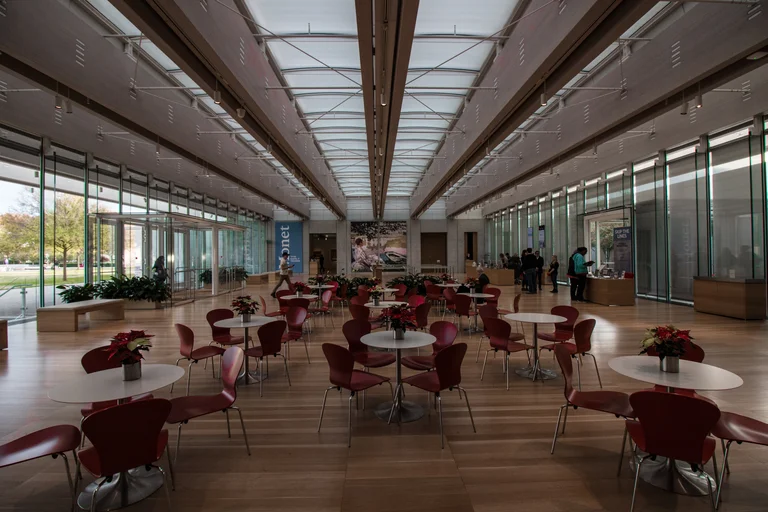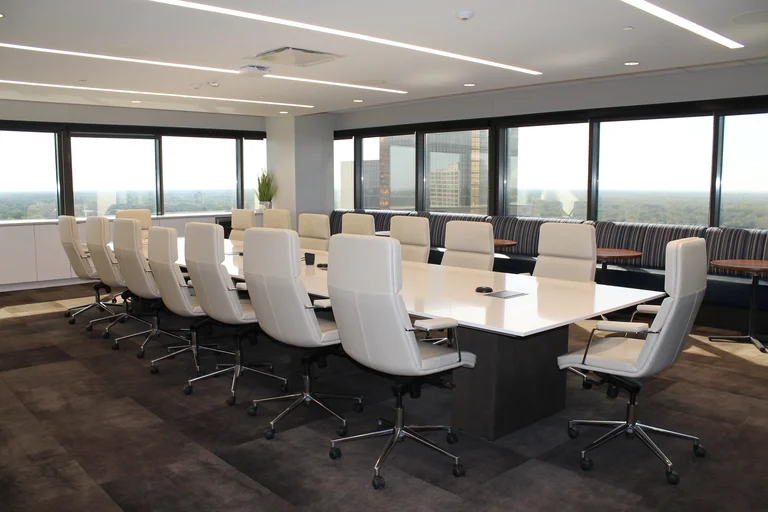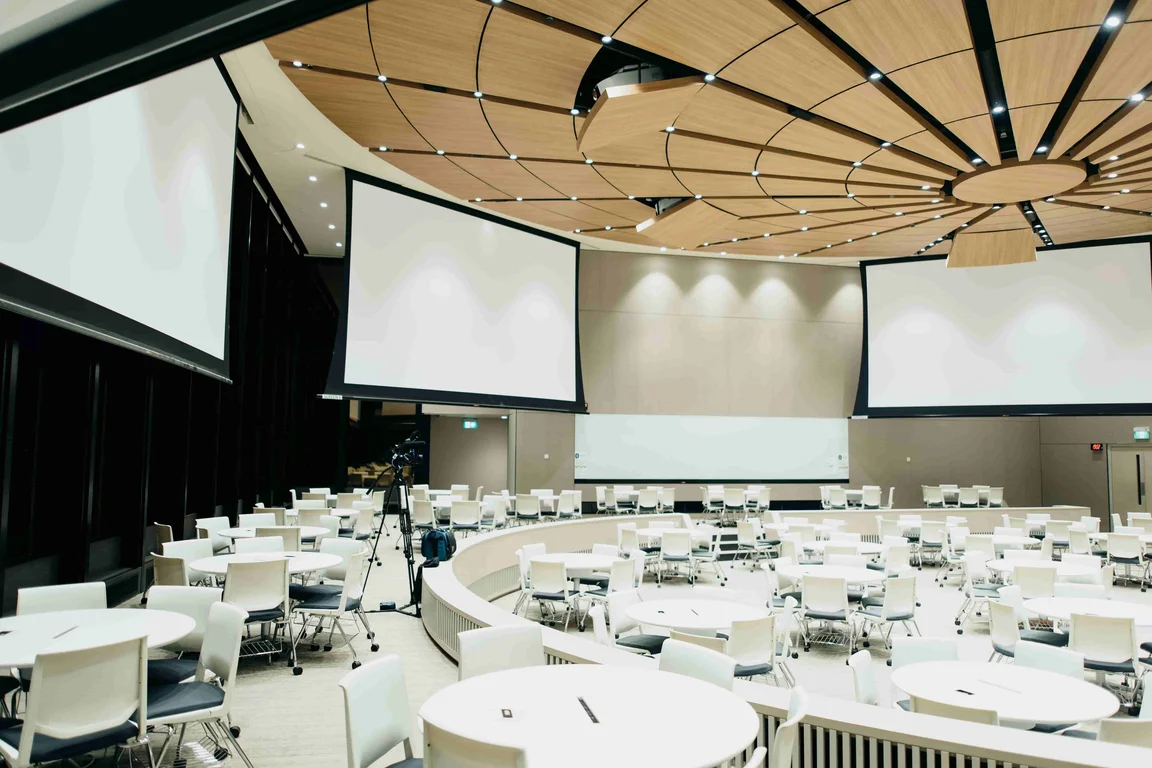Matching the right type of seating arrangement to suit the purpose of your event will amplify the experience for your guests. As a whole, we believe that seating arrangements should be given more consideration during event planning.
This article will give you some important factors to consider when organising your seating arrangements for an event. It also provides a rundown of the different seating arrangements you can use and what types of events they suit best.
Choosing the Right Seating Arrangement for your Event
There are several important factors we think you should consider when choosing the right seating arrangement for your event, whether it be a conference or meeting.
Going in blind and picking the style of seating that’s most convenient might seem to be the right choice at the time but, to ensure your guests get the most out of your event, you need to be more calculated than this.
Here are some simple points to consider when planning your seating arrangements that’ll bring the best out of your guests, and make your event fit for purpose.
What’s Your Event For?
This links to our previous point - your event needs to be fit for purpose. The right seating arrangement can go a long way to helping your event do what you need it to. Your chosen seating arrangement should complement the purpose of your event.
Ask yourself some simple questions about what you want from your guests: do you want them to have discussions with each other? Are you going to ask them to complete tasks in groups? Or is it a relaxed dinner setting?
Questions like these will help you get an idea of how you should seat your guests. We’ll be going into more detail about different seating arrangements and what types of events they’re best suited for later.
Amount of Guests
This is one of the most important variables you’re going to encounter: just how many guests will be attending your event? This, along with venue size and capacity, will play a big part in deciding what seating arrangements you go for. As you might expect, there are different seating arrangements that suit bigger groups, and ones that suit smaller groups.
Get an idea of how many guests will be attending by sending out invites and ask for responses. It’s to be expected that there will be some guests that won’t be able to make it, but do your best to get a rough attendance figure so that you can plan accordingly.
Size of the Venue
Aside from the number of guests attending, the size of your venue is arguably the most important variable. The number of people attending your event will directly impact the venue you decide to go for and vice versa - whatever order you want to plan this is completely up to you. However, the purpose, style, and structure of your event will also dictate how big a venue you go for and, consequently, what kind of seating arrangement.
Furniture
Seating arrangements aren’t possible without seats themselves. It may sound simplistic, but planning how many chairs, tables, and other bits of furniture you need should be near the top of your list of priorities.
Depending on your chosen venue, you might have to find a separate furniture supplier if the venue doesn’t have the right amount or style. Don’t underestimate this step in your planning as it will directly impact how well your seating arrangements complement the purpose of your event.
Different Seating Arrangements and Their Benefits
Now is the time to introduce some different styles of seating arrangement to give you some inspiration for your next event. Each of these different seating arrangements has advantages and disadvantages.
These seating arrangements lend themselves to a certain style of event, with some overlap, which we will highlight.
Banquet Seating
Features:
Several separate tables, usually round, with 4-8 guests on each
Similar to how a wedding dinner would be arranged

Advantages:
Guests on the same table can easily speak to each other
Great for rapport-building within certain groups
Disadvantages:
Guests are likely to only interact with people at their table
Can encourage groups to form
When should this be used?
Banquet seating is a fantastic option for events where food is served, suiting events such as awards nights, for example. The main benefit of this style of seating arrangement can also be its main drawback - guests will be able to network on their own tables, but are unlikely to go beyond this. Use this seating arrangement wisely and be tactical with your seating plan.
Family Seating
Features:
Long banquet-style table and benches / chairs
Communal style of eating and socialising

Advantages:
Looks impressive in pictures
Creates an informal and relaxed atmosphere
Disadvantages:
Limits the chance for networking
People far away from the front of the room may struggle to see
When should this be used?
Banquet-style seating is becoming more present in recent years. The communal feel it provides makes it a popular choice for weddings, in particular. However, it can be a great option for a company awards night, gala night, or something similar.
Cabaret-style Seating
Features:
Similar to banquet-style seating, but more compact
Ideal for achieving the feel of banquet seating but with fewer guests

Advantages:
Creates a relaxed atmosphere
Perfect for celebrations and formal occasions
Disadvantages:
Guests are unlikely to network with people outside of their table
More tables and fewer seats can result in reduced seating capacity for guests
When should this be used?
As we’ve already mentioned, cabaret-style seating is very similar to banquet seating. It achieves the same effects but is more compact with more tables but with fewer guests sat at each one. This is brilliant for creating an intimate atmosphere amongst your guests, making it perfect for awards nights, comedy nights, workshops, and other similar events.
Classroom-style Seating
Features:
Multiple rows of horizontal tables and chairs
All tables face towards a focal point, normally towards the speaker or the front of the room

Advantages:
Great for seminars, training sessions, and meetings
A great seating arrangement for when note-taking is needed
Disadvantages:
Interaction isn’t as natural as guests don’t face each other
Can only really be used in a meeting, training, seminar setting or similar
When should this be used?
Classroom-style seating is ideal for sessions that are presentation and speaker-led. They allow guests to focus all their attention directly on the presentation or speaker leading the session. You can do classroom-style seating without desks, but this makes it more difficult for guests to take notes using pen and paper or a laptop.
Boardroom Seating
Features:
One long table in the centre of a smaller room
Guests sit either side of the table with one end of the room being a presentation area

Advantages:
Similar to classroom-style seating but better suited to smaller groups
As guests share the same table, it allows for discussions to be held
Disadvantages:
This seating arrangement can be quite intense when held for long periods of time
Guests could become cramped as they’re sharing the same table
When should this be used?
If you’re presenting to a small group of guests, then a boardroom-style meeting is probably your best bet. It’s the most efficient way for a speaker to present to a smaller group whilst giving them the space to take notes and have discussions with each other.
Boardroom meetings are also great as they allow for more interaction between speaker and audience than a classroom-style seating arrangement.
Create the Perfect Seating Arrangement with Make Venues
As you can probably tell, there’s a lot to take into consideration when deciding on the best seating arrangements for your event. Like many things in event planning, there are lots of variables that can impact your decision. However, we think the most important thing to decide is what you want your guests to get from your event.
If you’re new to event planning and aren’t too sure where to start with choosing seating arrangements, the Make Venues team are happy to help. We have plenty of experience in planning a variety of events, all with different styles of seating arrangements.
With venues across Leamington Spa, Bristol and London, get in touch with us today to see how we could help make your next event the best one yet.
